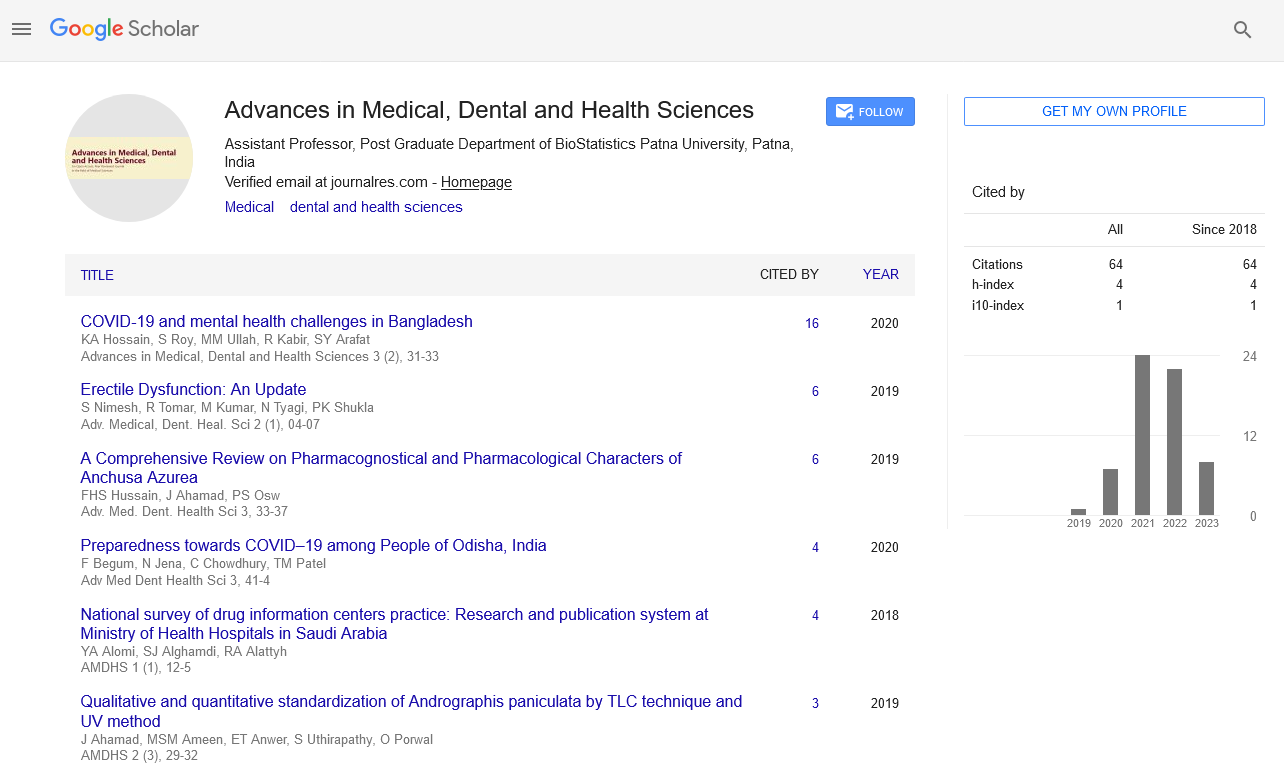Photobiomodulation and its Application in Dentistry
Abstract
Author(s): Shaymaa Hussein Rafat Kotb*
Introduction: Photobiomodulation is a promising field in modern minimally invasive dentistry approach which serves as a non-cutting method of using the red to near infrared light on body tissues. PBM consider an excellent alternative or adjunctive to traditional treatment modality. It is a simple and fast to perform, well accepted and tolerated by the patients, that aid in pain relief and reduces inflammation, parallel to the enhanced healing and tissue repair processes. PBM can induce cell proliferation and enhance stem cell differentiation. This impact has direct effects on many stimulatory and protective genes. So this application with these properties was used as adjunctive therapy to the conventional treatment of various diseases and conditions related to soft and hard tooth structure and surrounding tissues.
Aim: The purpose of this study is to thorough the light on the applications of PBM therapy in dentistry by understand mechanism of action, with a special focus on stem cells and mechanisms of repair.
Methods: A systematic literature review depends on collecting data from an evidence based studies. Searches were made of fifteen electronic databases: the Cochrane Oral Health Group’s Trials Register, The Cochrane Central Register of Controlled Trials (CENTRAL), EMBASE, PsycINFO, Scopus and Web of science, MEDLINE (PubMed).
Summary: PBM applications is very promising adjunctive or alternative approach in periodontal, Peri-implant inflammation therapy, orthodontic treatment, temporomandibular joint problems, and with oral medicine lesions, surgical exposure of impacted teeth, pediatric dentistry, crown cementation, dentin hypersensitivity and in gingivectomy, gingivoplasty and frenectomy. LLLT is an easy, simple, shorter chair time, mostly technique accepted by patients and moreover reduce pain intensity, stimulate healing capacity, better coagulation and no need for suturing so gain more patients acceptance.
Conclusion: Photobiomodulation is recommended as an alternative for failed standard therapy or as an adjunct modality to treatments. It is a safe and potentially effective on its own thus facilitating easy use. It is a helping device to complete conventional therapy. With superior advantages of easy and faster application, better coagulation, no need for suturing, less swelling and pain and better deepithelialization. However, there is some limitations include cost of the device and it is very difficult to have all the different lasers indicated for different procedures in a private practice.
